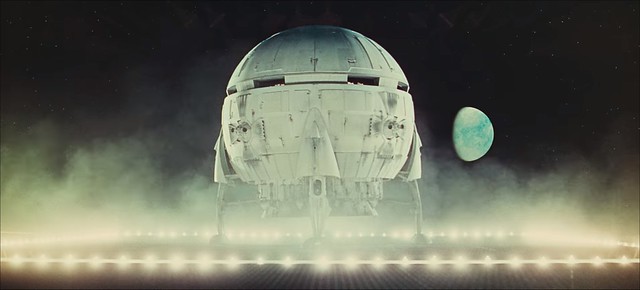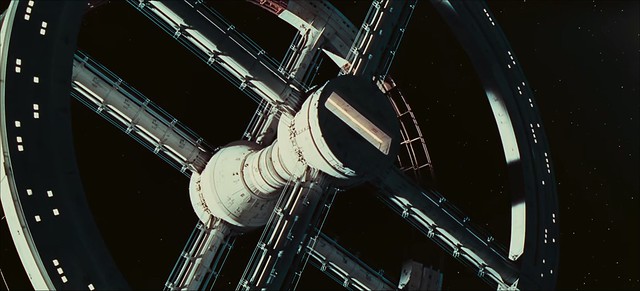Warner Bros. Entertainment is re-releasing Stanley Kubrick’s 1968 visual masterpiece, 2001: A Space Odyssey. The film is still a eye-full even 50 years later. Esteemed director Christopher Nolan took on the monumental task of photochemically restoring the film negative on a 70mm print, bringing the classic flick to life like never before in ultra HD.
It should go without saying that this is by far the best science fiction film when it comes to special effects. Not only were the effects way ahead of their time for a 1968 film, but there isn’t even a movie out there today that can hold a candle to what Kubrick accomplished with the visual composition of the effects and set pieces used in 2001: A Space Odyssey. It was a real shame about the sets being destroyed, but I suppose it prevented any derivative imitations, even from the not-so-well received and far inferior 1984 sequel, 2010: The Year We Make Contact.
The trailer for the 70mm reprint of Kubrick’s 2001: A Space Odyssey says it all. It looks magnificent and the special effects more than hold up over the last 50 years, they excel at showcasing what’s both a forward looking take on space exploration but also manages to maintain a grounded sense of realism that doesn’t date the film like so many other sci-fi flicks. Check it out below.
The moon landing sequence is still a real marvel to behold, and the construction on the sets using large scale models ensured that even half a century later the movie still looks fantastic and awe-inspiring.
Also, unlike CGI you don’t have to worry about renderers and shaders failing to capture the mood or the lighting of the set, which happens 100% of the time with every single new sci-fi flick out there. Back in the day, when they were working with models on real sets and super-imposed imagery, it was all based on what was real, what was actually on the set, and it translated into a grounded and believable cinematic experience.
Now I know some of you lighting engineers out there will be quick to point out that path tracing and ray tracing have come a long ways in terms of applicable use for cinematic purposes. But even then we’re still a long ways off from seeing something like DXR being applied in a film with 1:1 rendering precision that you would achieve from a life-scale model on a set.
When you’re working with real life tools you can directly control the lighting to capture the kind of mood and setting you want. And you could readily tell that Kubrick managed to perfect the sort of ominous lighting effects that he wanted in order to portray these man-made machines in both a grand and lonely way.
The salubrious depiction of space featured in films like Star Trek and Star Wars is no where to be seen in 2001: A Space Odyssey. Instead, we get a cold, technical, almost clinical look at how people attempt to survive in metal-encased coffins stuck in the vacuum of star-lit darkness, and some of the dangers that come along with the journey into the outer abyss.
As explained by director Christopher Nolan, this reprint of the classic required no additional edits, no special effects, and no CGI infiltration imagery. Nolan states…
“There are no digital tricks, remastered effects, or revisionist edits. This is the unrestored film – that recreates the cinematic event that audiences experienced fifty years ago.”
As a movie, I didn’t like 2001: A Space Odyssey… at all. However, as a leap in technological and cinematic evolution, it’s untouched by time; a true masterpiece that stands in a pantheon of greatness, whereupon no peers or rivals are its equal.
You can look for the 70mm version of 2001: A Space Odyssey to launch soon.






